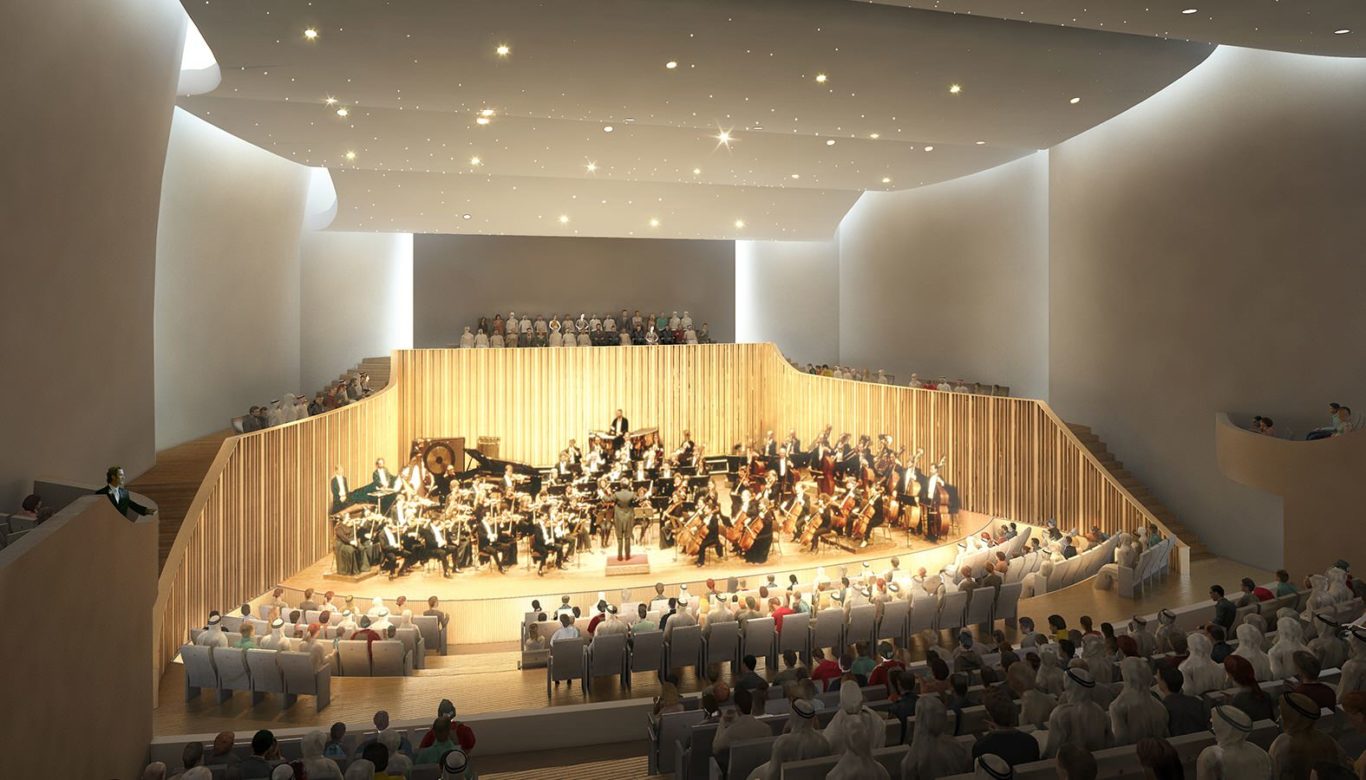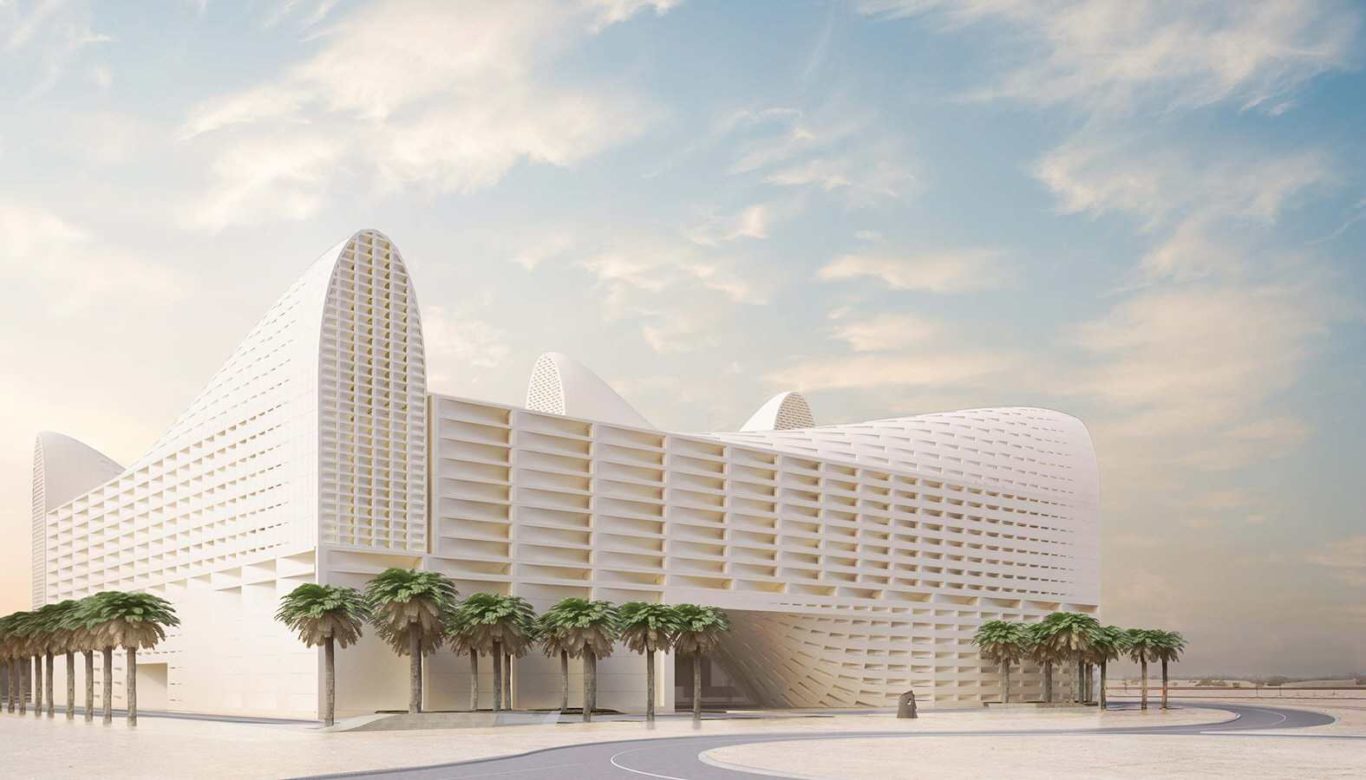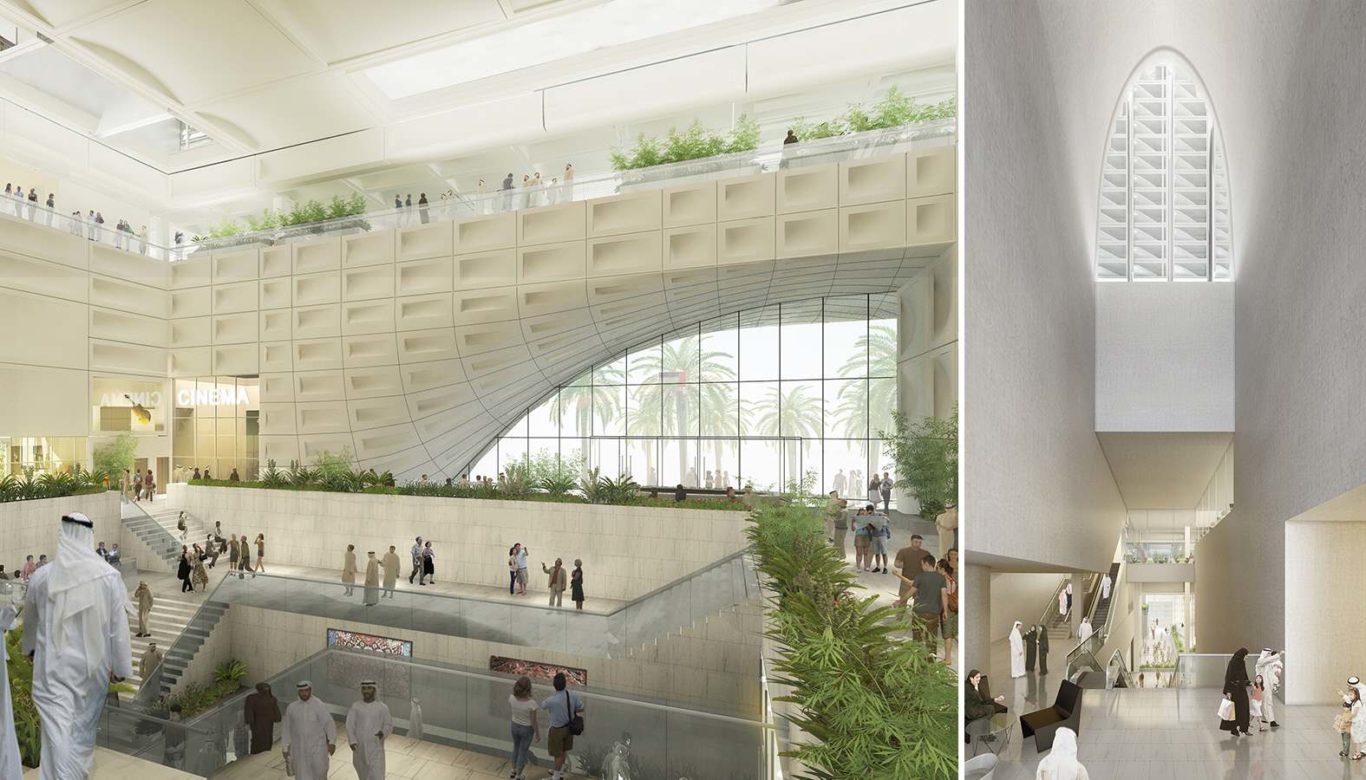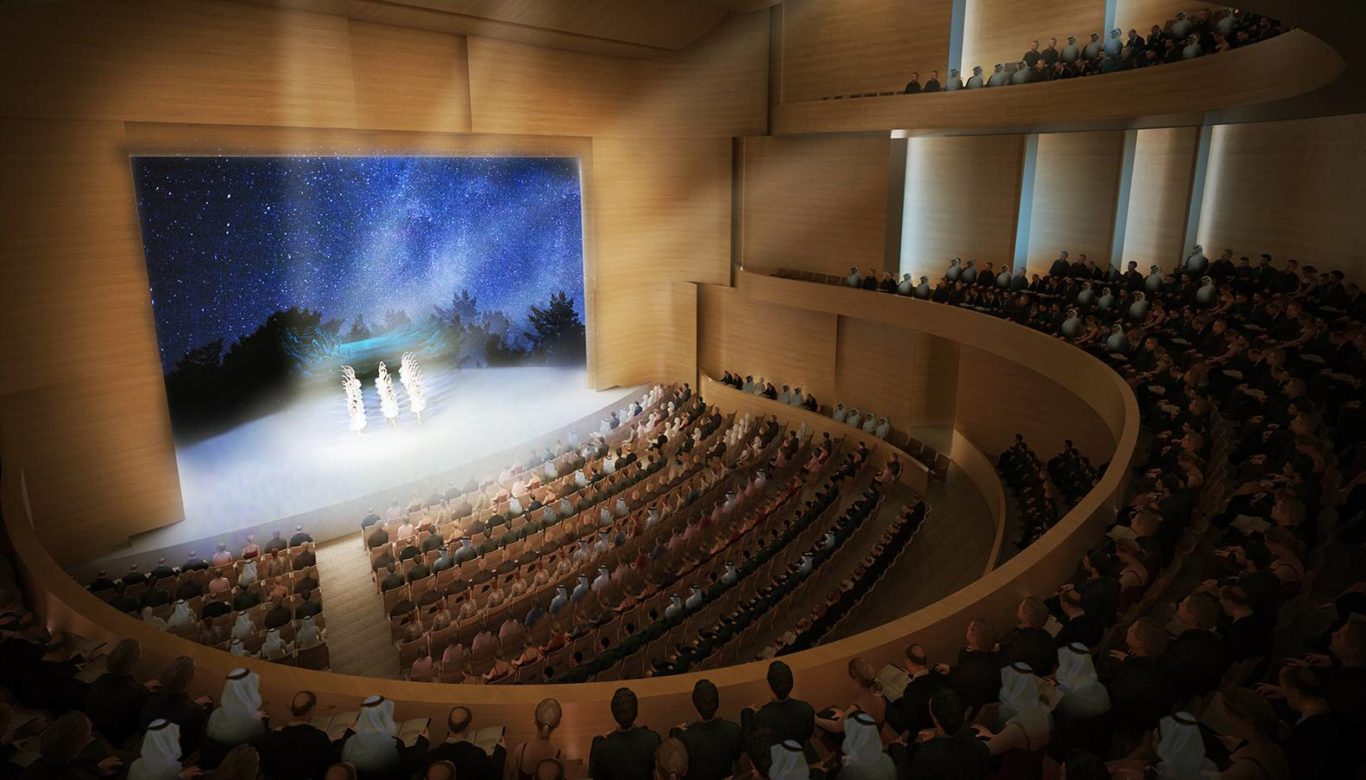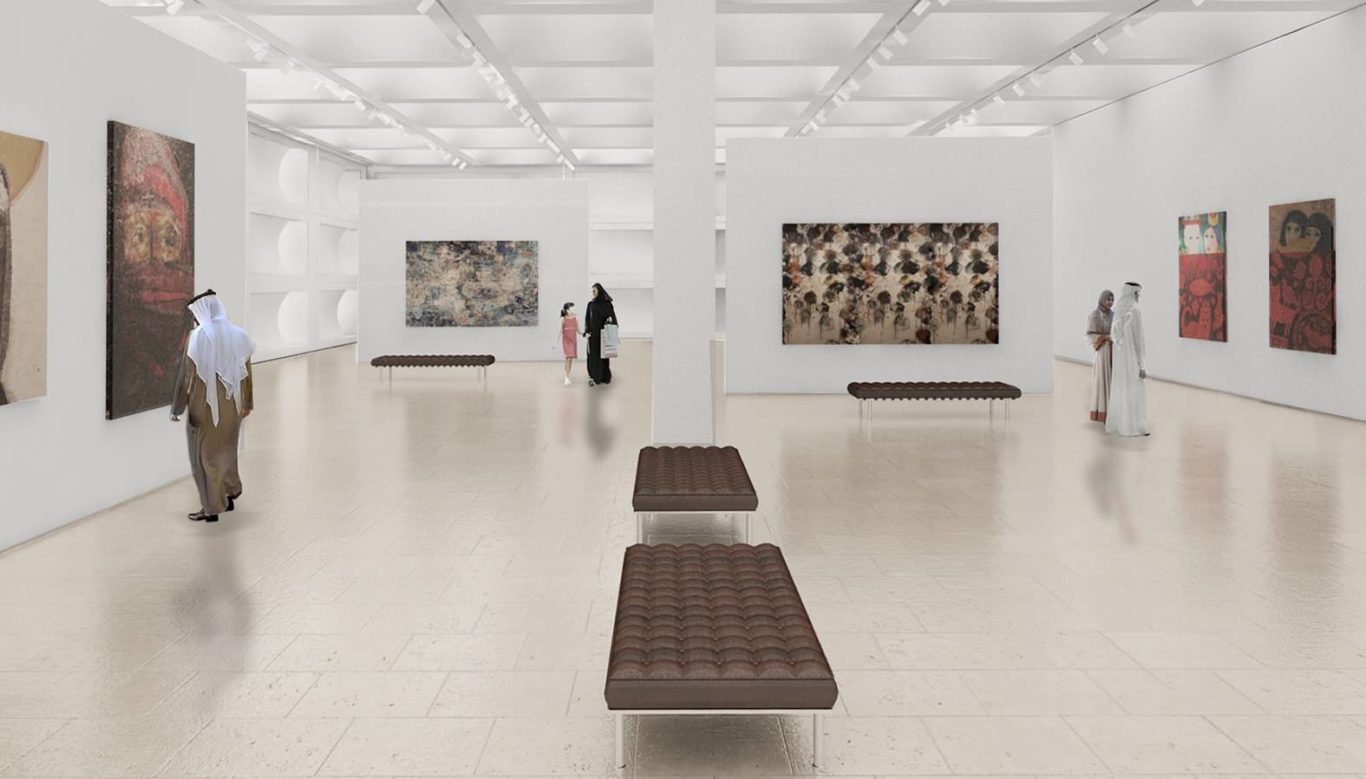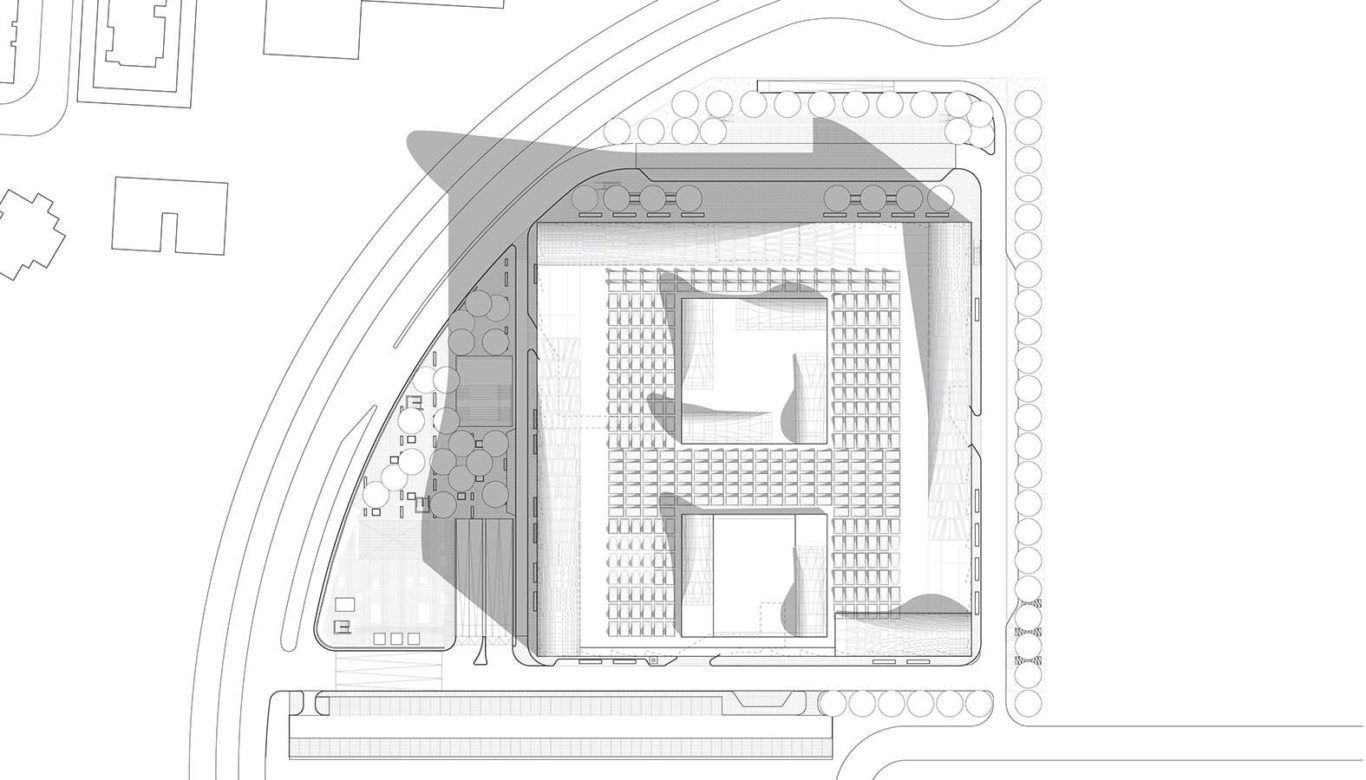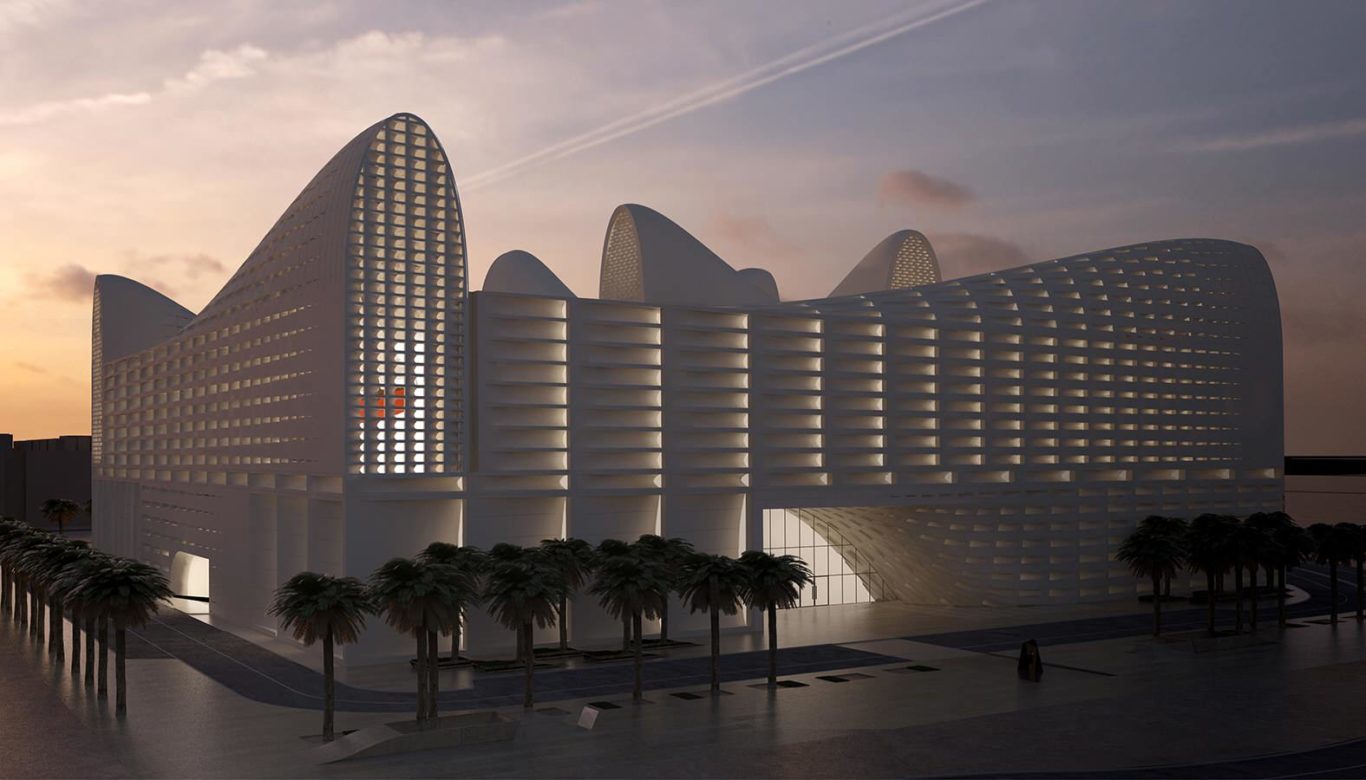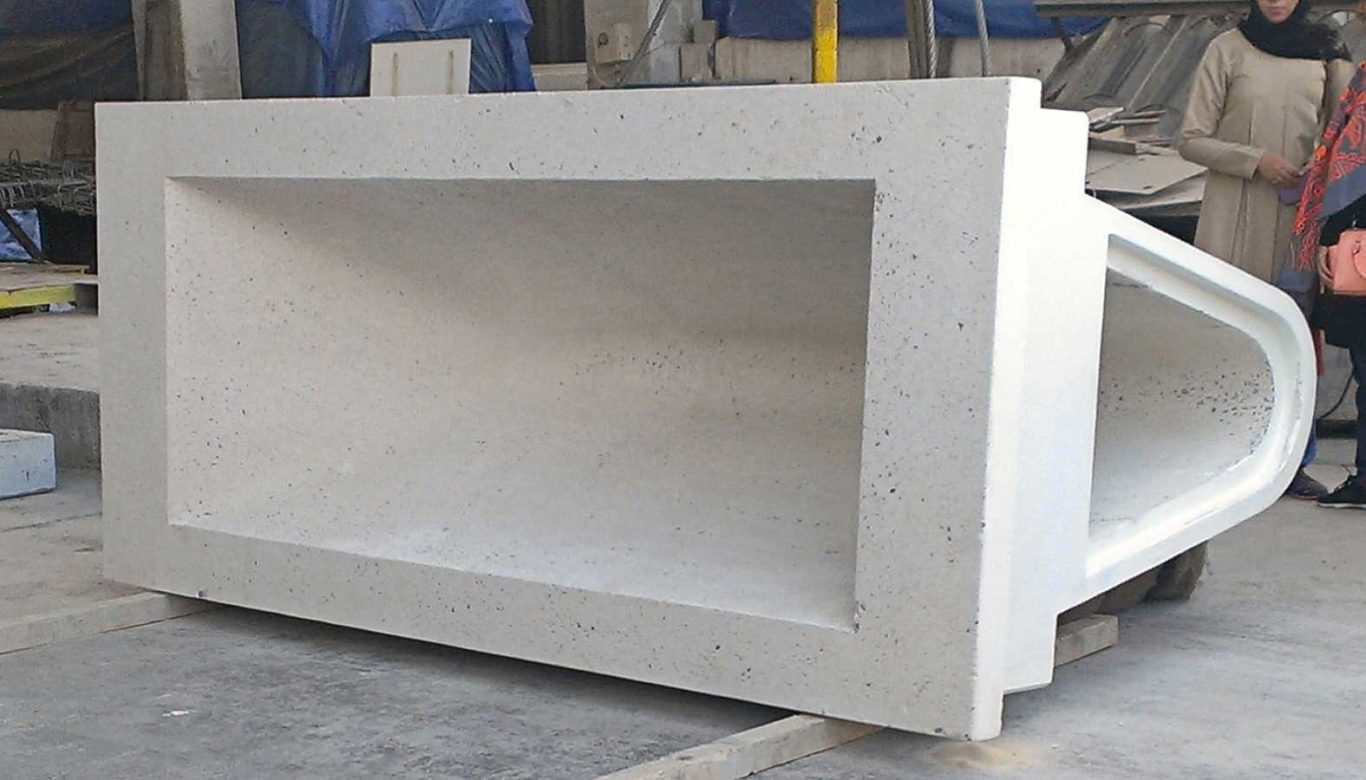Evoking the client’s vision to promote art, music, theater, and dance in Kuwait, the design for the Al Ahmadi Cultural Center celebrates the country’s rich cultural heritage with a bold response to the project’s program, climate, and site.
Located south of Kuwait City in Mahboula, the Center consists of two 800-seat theaters, a 400-seat concert hall, lecture hall/cinema, conference center, children’s center, as well as galleries for the fine arts and historic cultural artefacts.
With various programmatic points of interest, the building called for a clear organization that is easy for visitors to navigate. Its courtyard plan is reminiscent of the inward focus of traditional Islamic architecture, which responds to the climatic conditions of the region. Serving as an orientation device, the courtyard provides the point of entry to the building, enabling direct access to the performance spaces that flank it on all four corners, as well as to the galleries that line the Center’s eastern and western edges.
The desert climate, with extremely high average levels of solar radiation and temperatures, required an innovative and site-specific response for both the exterior and interior of the building.
The design filters sunlight into the building to achieve optimal levels for the display of art and historical artifacts, while providing thermal mass to reduce cooling loads. This indirect natural light animates the courtyard, galleries, and performance spaces throughout the day, providing a shifting experience of light that is specific to the desert site.
